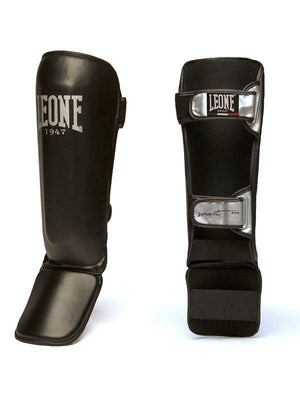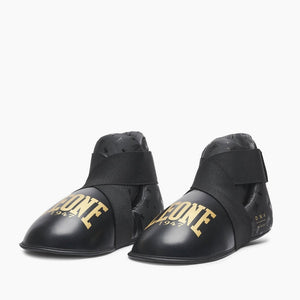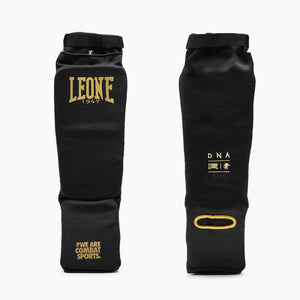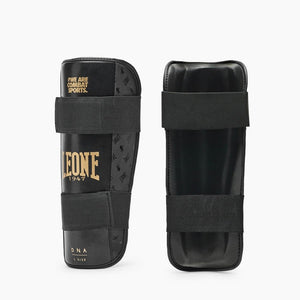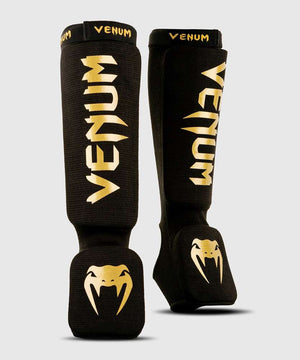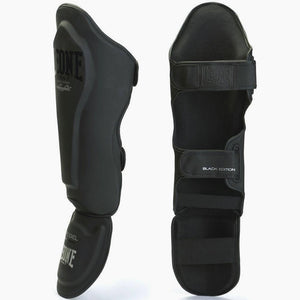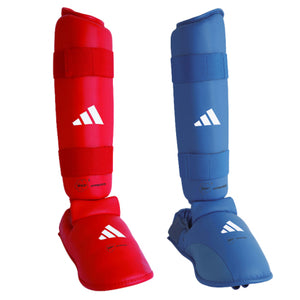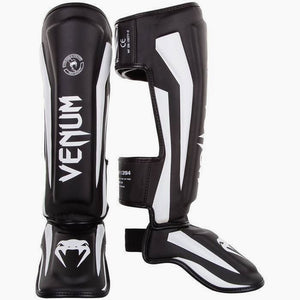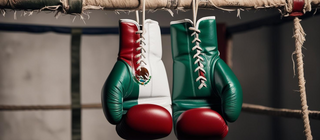Combat sports guards: here's how to choose
Le shinguards (also called shin guards), are protectors that are used in training and in the competitions non-professional competitions of muay thai, kick boxing, karate and in the mixed martial arts. Their purpose is to protect the lower limbs from injury when practicing disciplines in which the legs are highly stressed. Inadequate protection could lead to even serious injuries.
This aspect is especially important for the beginners, who have not yet developed either the proper technique or the muscles that help them "cash in" on blows by reducing the amount of injury.
We distinguish three types of shinguards, each with different characteristics and suitable for different use.
shinguards rigid without a foot guard. They have rigid padding and are generally used in the kick boxing. As you can easily guess these shinguards are devoid of foot protection. It is good to supplement the protection with some Foot protections. The advantage of this solution is that you are able to ensure greater protection to the foot (fully protected by the foot guard), while maintaining excellent joint mobility, as the two guards are detached from each other.
shinguards rigid with foot guard. They are the most commonly used in kick boxing and in the muay thai. The particularly rigid structure best protects the shin and instep, but leaves other parts such as the toe and heel uncovered.
shinguards SOFT SOCKS. They are made of stretch cotton and are worn like a sock. Unlike the shinguards rigid ones, they do not have a Velcro back closure. In addition, the padding is softer and lighter. They are generally used by those who practice mixed martial arts (MMA), because there is a need for particular mobility in ground fighting phases.
shinguards approved
To compete in official competitions, it is necessary to choose some shinguards homologated according to the discipline practiced and the federation to which it belongs. It is possible to check the homologation of the shinguards, as well as all other protections, on the websites of the different federations.
For beginners
If you are approaching a combat sport, in addition to considering the aspects listed above, it is good if you seek advice from your instructor, who will help you choose the shinguards most suitable for your needs. Keep in mind that as soon as you start practicing these sports, it is not necessary to buy approved protectors, as you are unlikely to go competing in the first few months.
What are the best brands of shinguards
The quality standards achieved by leading brands of shinguards (Adidas, Venum, Leone 1947, etc.) are very similar, and prices may vary depending on the quality of materials and workmanship. Taking into account the above advice, be guided by factors purely aesthetics and of comfort, as well as from the wallet. Finally, keep in mind that each brand dresses in a different "way," just as each leg is different ... with time and experience you will understand which ones shinguards fit you best.
Choose the right size of the shinguards
Choosing the correct size of the shinguards is based on two factors: offering the protection best possible and yet at the same time not be cumbersome and hinder movement. In addition shinguards too large could slip and turn in on themselves, too tight would not adequately protect and would tighten on the calf.
As a rule keep in mind that the shinguards in height should come in just below the knee and in circumference they should tighten enough not to rotate, but not be too tight. It is always good to consult the size guide provided by the manufacturer. Combat Arena provides the size guide for most protectors.
Maintenance and care
During training you will sweat, and when finished it is good practice to dry and clean one's pads properly, to prevent the onset of bad odors and make them last longer. It is possible to clean the Shinguards with a disinfectant spray and cloth to eliminate bacteria. Water and baking soda are also a good solution. Drying will also prevent the impregnated fabric from deteriorating and the Velcro closure loops from rusting. Generally, the elastic shinguards can be slipped off and washed.


